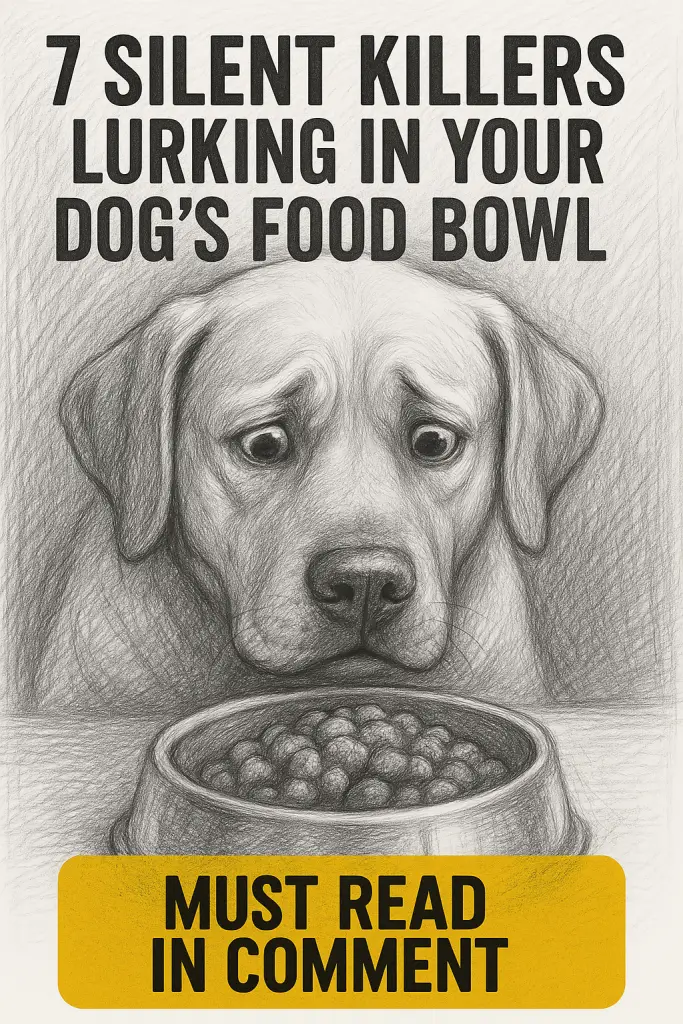
Every dog parent wants the best for their furry friend, but what if the danger is right in front of us—inside their food bowl? Many common ingredients and habits that seem harmless could actually be harming your dog over time. Here are the seven silent killers you need to watch out for, plus what you can do about them.
1. Artificial Preservatives
What Are They?
Ingredients like BHA, BHT, and ethoxyquin are used to keep dog food fresh for months on the shelf.
Why They’re Dangerous:
- Linked to cancer in lab animals
- Can cause allergic reactions or skin issues
- Accumulate in the body over time
What to Do:
Check labels for natural preservatives like vitamin E (tocopherols) and vitamin C (ascorbic acid) instead.
2. Low-Quality Meat By-Products
What Are They?
“Meat by-product” can mean anything from organs to beaks to feet—stuff not considered high-quality protein.
Why They’re Dangerous:
- Lower nutritional value
- Can include diseased or spoiled animal parts
- Linked to digestive problems
What to Do:
Look for foods listing real meats (like “chicken” or “beef”) as the first ingredient.
3. Artificial Colors and Flavors
What Are They?
Additives like Red 40, Blue 2, or “artificial flavor” are used to make kibble look and taste better (for humans, not dogs!).
Why They’re Dangerous:
- Linked to behavioral issues and allergies
- Unnecessary for your dog’s health
What to Do:
Choose foods without added colors or artificial flavors. Your dog doesn’t care if their food is brown or rainbow-colored!
4. Excess Salt and Sugar
What Is It?
Salt and sugar are often added to improve taste and shelf life.
Why It’s Dangerous:
- Can lead to obesity, diabetes, and heart problems
- Damages kidneys over time
What to Do:
Check for “salt,” “sugar,” “syrup,” or anything ending in “-ose” on the label. Pick options with little to none.
5. Corn, Wheat, and Soy Fillers
What Are They?
Cheap ingredients used to bulk up kibble without much nutritional value.
Why They’re Dangerous:
- Linked to allergies and skin problems
- Difficult for some dogs to digest
- Can cause chronic itching or ear infections
What to Do:
Go for foods with whole grains or grain-free options, depending on your dog’s needs.
6. Toxic Mold and Bacteria
What Is It?
Improper storage or low-quality manufacturing can lead to food contaminated with mold (aflatoxins) or bacteria (salmonella, listeria).
Why It’s Dangerous:
- Can cause vomiting, diarrhea, or worse
- Aflatoxins can damage the liver
What to Do:
Store kibble in airtight containers in a cool, dry place. Check for recalls and avoid dented or damaged packaging.
7. Chemical Additives and Pesticide Residues
What Are They?
Traces of pesticides, herbicides, or chemical additives sometimes end up in pet food through raw ingredients.
Why They’re Dangerous:
- Build up in your dog’s system
- Potentially cause long-term health problems like cancer or organ failure
What to Do:
Consider brands that use organic or non-GMO ingredients and test for contaminants.
How to Keep Your Dog Safe
- Read the label: If you can’t pronounce it, look it up or skip it.
- Rotate protein sources: Don’t feed the same food for years—change it up!
- Avoid bulk buying: Fresher is better.
- Watch for recalls: Stay alert to pet food news.
- Talk to your vet: Ask for recommendations tailored to your dog.
Final Thoughts
Our dogs can’t tell us what’s wrong, so it’s up to us to protect them. The hidden dangers in their food bowl might not cause problems overnight, but over months and years, the damage can add up. Take a few minutes to check those labels—you could be saving your best friend’s life.